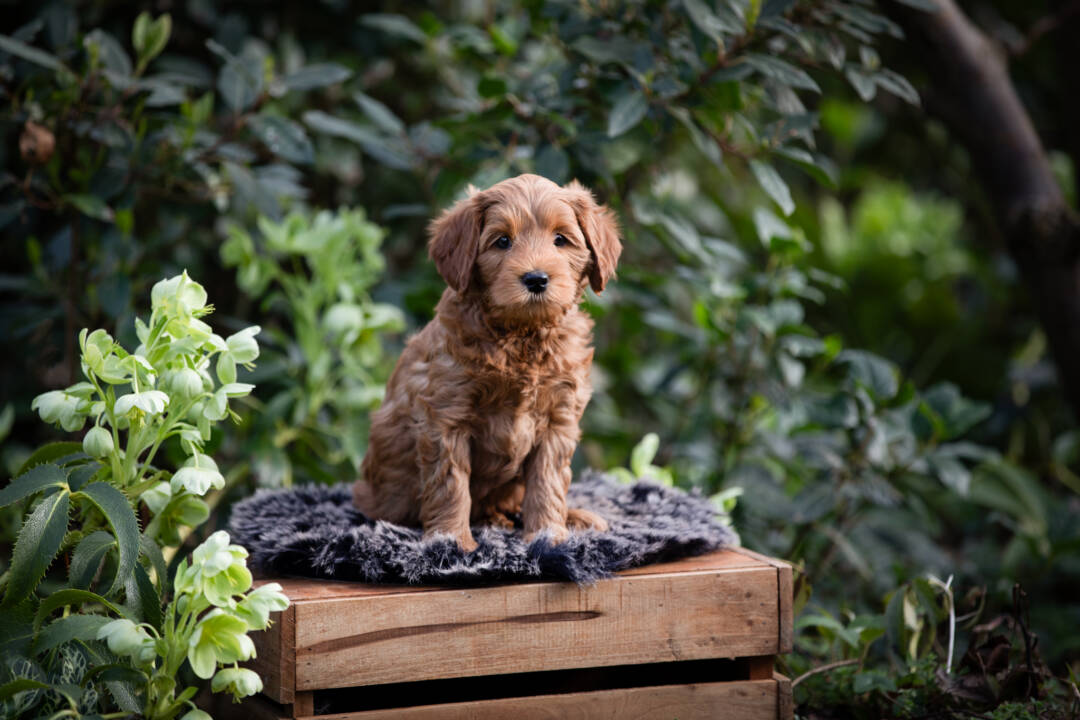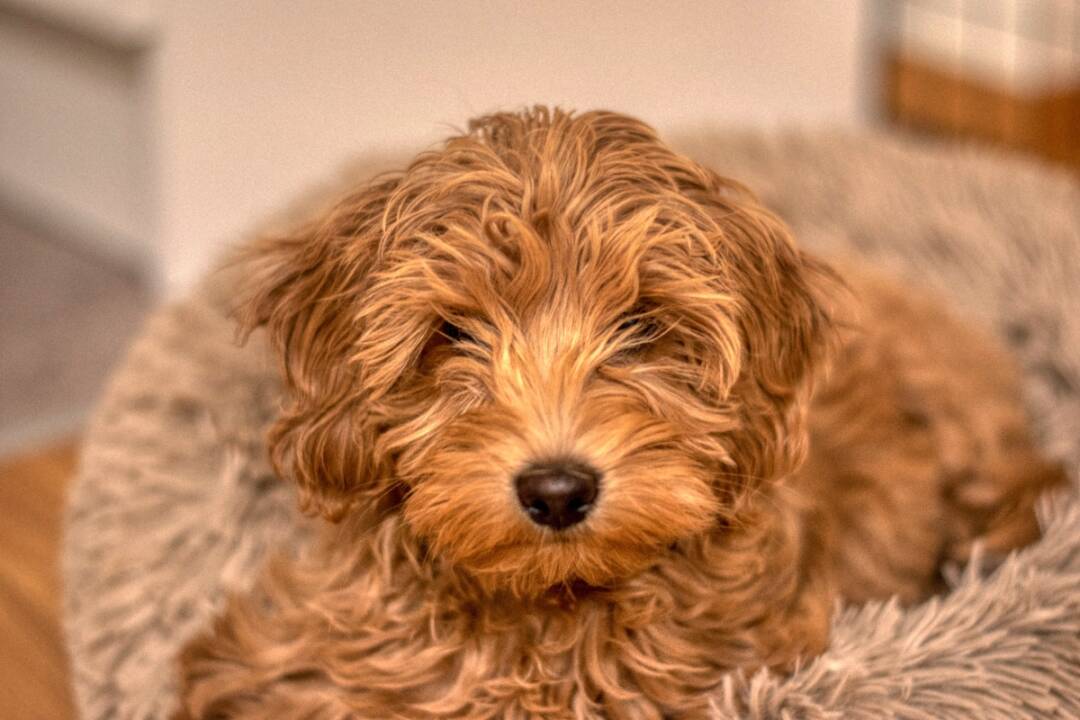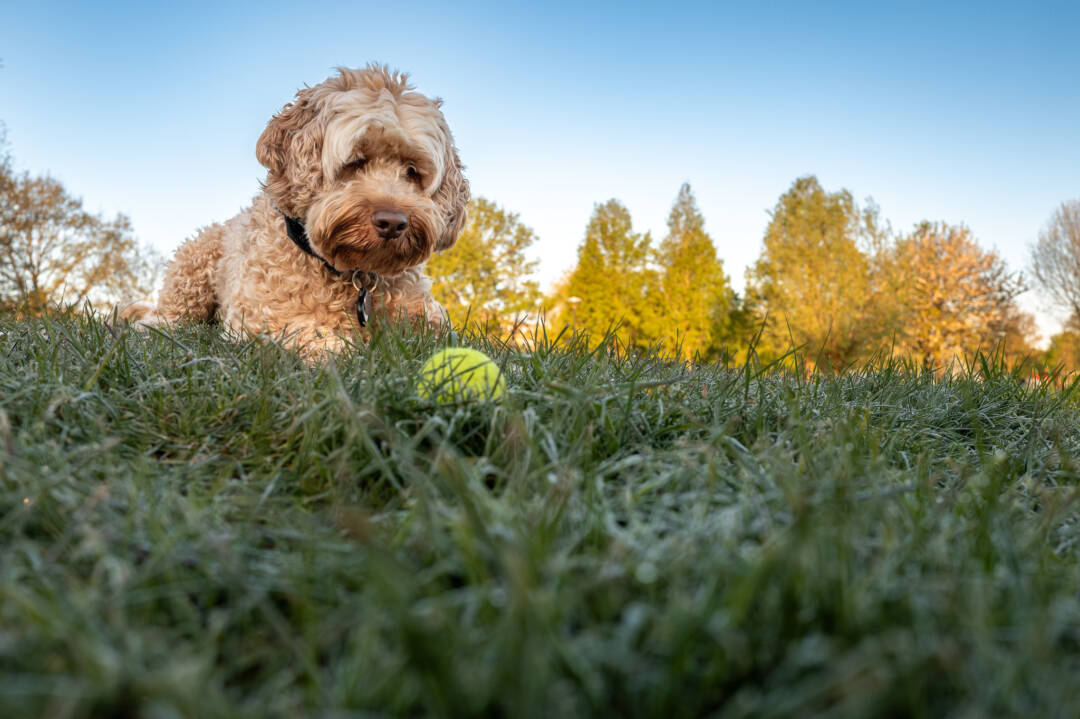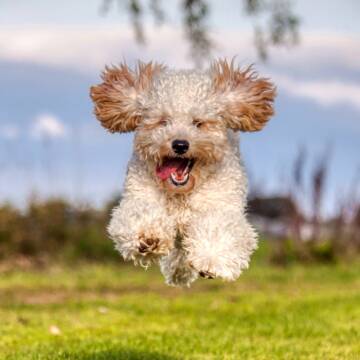Pup
The First Days with an Australian Labradoodle Puppy at Home: What to Look Out For
At last, the day has arrived: today your Australian Labradoodle can finally come home with you. A very special day, both for you – and any housemates – as well as for your pup. But how do you get through those first few days in the best way possible?
Settling In
Your new companion has just been separated from his litter for the very first time and has ended up in a strange new home. That’s why calm is the magic word for the first few days. This doesn’t just mean lots of sleep, but above all, as little fuss and excitement as possible. All the new smells, objects, people, and surroundings are already overwhelming enough. Family and friends may be eager to visit, but it’s best to delay that for a few days.
Bonding
The first days are all about cuddles and exploring. During this time, don’t leave him on his own – you can slowly build that up later. This way, he learns to bond properly with you and knows that he belongs with you. If he wants to wander around and explore the house on his own, stay in the same room. That way you can keep an eye on him, and he can come to you for comfort if he needs it.
Night-time Rest
Nights can take some getting used to for a puppy. In his litter, he was used to sleeping with his siblings, and now he suddenly finds himself alone. That’s why it can help to stay close by during the first few nights. For example, you could temporarily place his bed next to yours. That way you can easily reassure him if he’s restless, simply by laying your hand near him.
It’s important that your pup’s sleeping spot is a calm and safe place where he feels comfortable. Hopefully, you’ve already puppy-proofed your home and gathered all the essentials to care for him properly. Just like a baby, he’ll need a lot of sleep at first. He sleeps best in a place that feels cosy and familiar. Put down a soft blanket and perhaps a toy or cloth that smells of his litter. This helps him process all the new impressions at his own pace.
A well-rested pup stays more relaxed and learns more quickly. If he doesn’t get enough sleep, he can become overstimulated, which often shows in excitable behaviour and excessive biting.
Socialisation
After the first days of settling in and bonding, it’s time to gradually start discovering the outside world. Socialisation doesn’t mean rushing through a checklist; it’s about letting your pup get to know new situations at his own pace. Think of sounds, vehicles, people, and other animals. Take it slowly and avoid cramming in too much at once – an overstimulated pup isn’t fun for anyone. Short, positive experiences are the best way to help him build confidence.
Communication
It’s a good idea to familiarise yourself (ideally beforehand) with how to communicate with your dog. Most of it is through body language, which is often very subtle. Once you can ‘read’ your pup, you’ll be able to understand him better. You’ll also quickly learn the best way and the right moments to approach him. Billy Our Friend is a wonderful little book for children, and secretly very useful for adults too.
Routine and Structure
Your pup will probably want to play and run around all day, so it’s up to you to make it clear when it’s playtime and when it’s time to rest. Feeding should also be done at regular times as much as possible. In fact, training can begin right away.
By taking your pup outside immediately after every nap, meal, and play session, you’ll start teaching him the basics of housetraining. Be prepared to pop outside dozens of times a day in the beginning. These aren’t proper walks or socialisation moments yet, just short toilet breaks. If he has an accident indoors, don’t scold him – otherwise he’ll only learn that he shouldn’t go to the toilet when you’re around.
Be clear (but kind) about what is and isn’t allowed. Reward good behaviour by speaking to him in a positive tone. Of course, he looks absolutely adorable – we know. But it’s best to start teaching him right from the very beginning.



